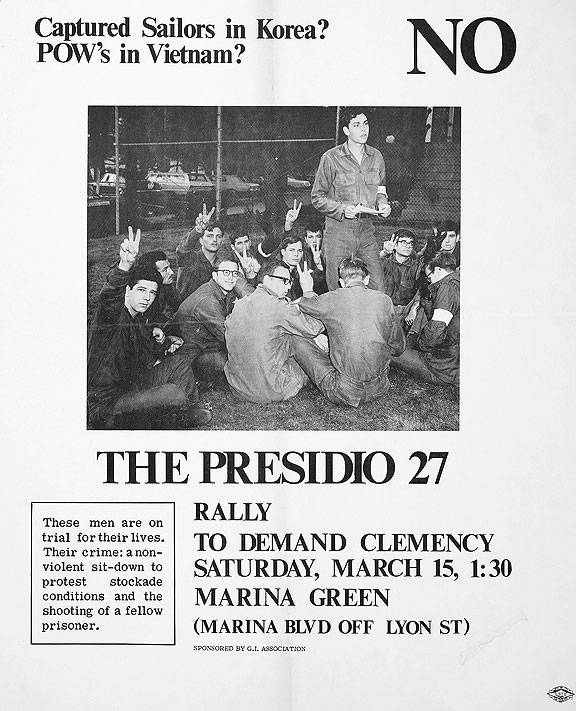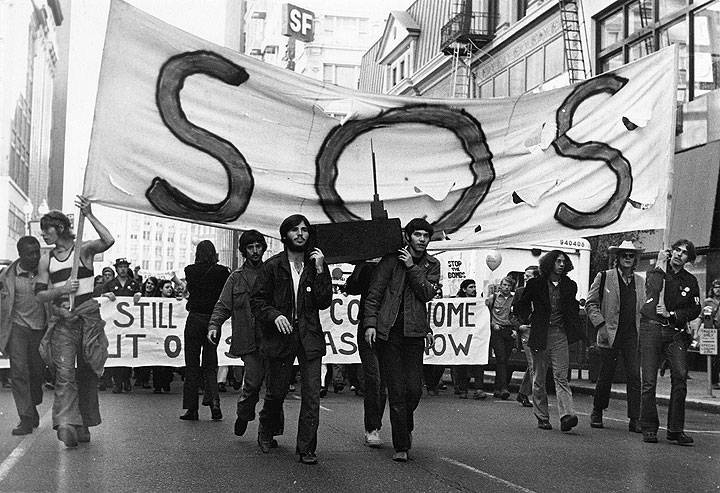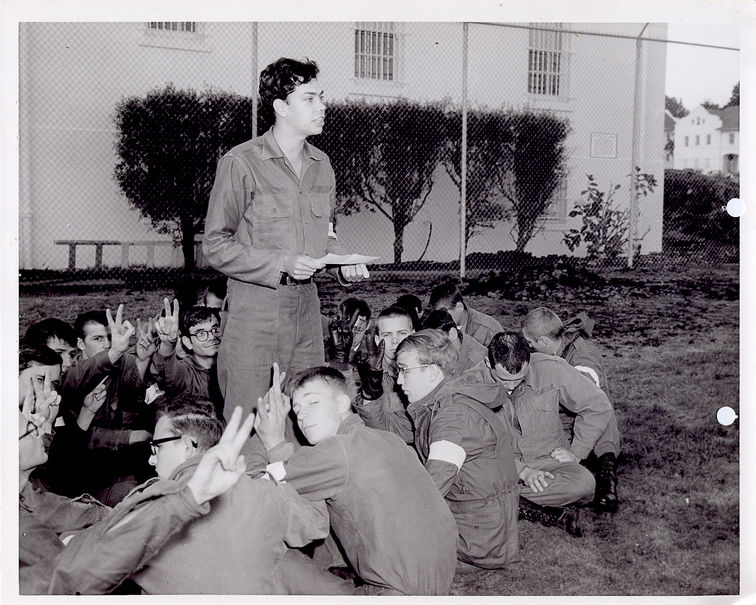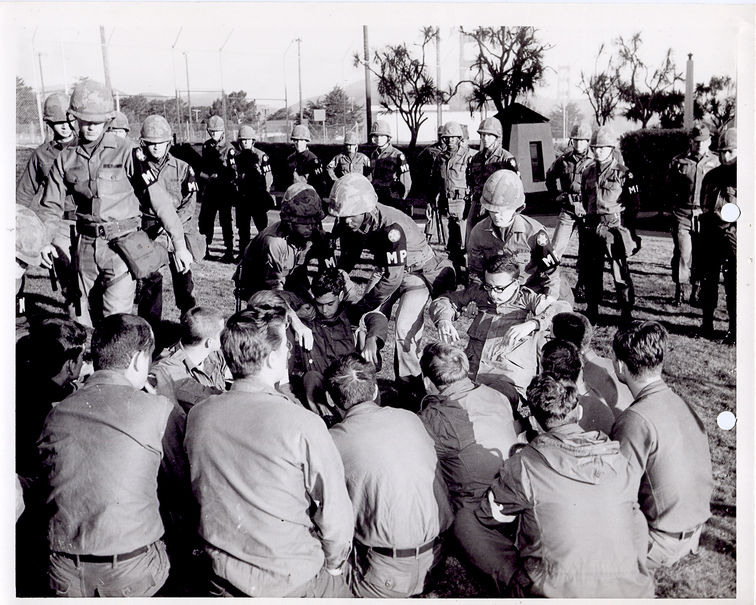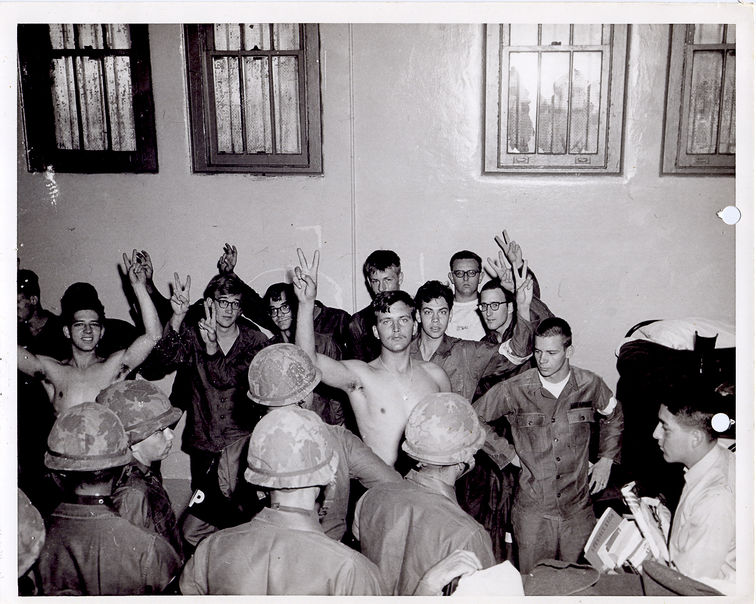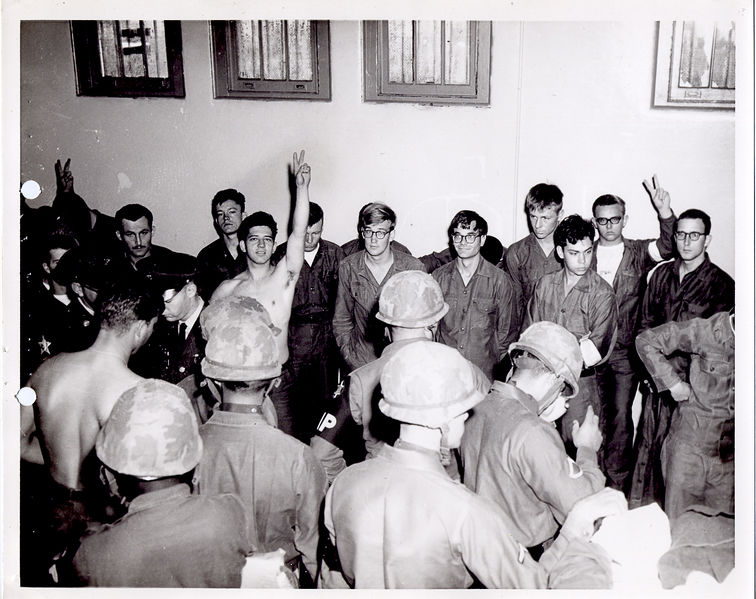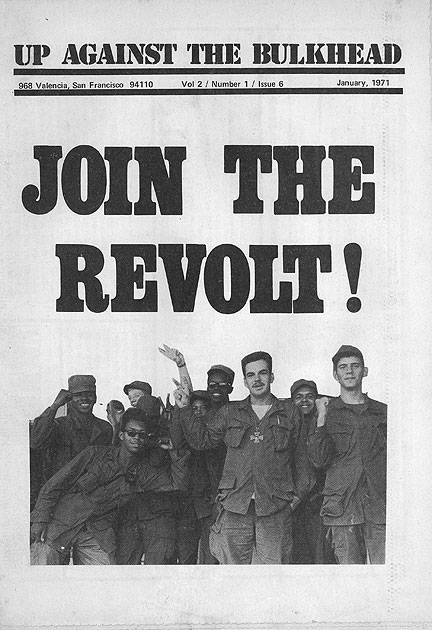Presidio 27
Historical Essay
By the Friendly Fire Collective
1969 poster supporting the Presidio 27, published by the GI Association
Image: Lincoln Cushing
The minimum-security stockade at Ft. Scott, the Army base once located on the grounds of San Francisco’s old Presidio, was built before the First World War to house a maximum of 56 men. At the time of the Vietnam War, the small jail cell was bursting with 115 imprisoned soldiers there in 1968. Most of those being held there were charged with offenses related to going AWOL, desertion, or war resistance, with petty thieves or drug users intermixed. Besides overcrowding, conditions at the stockade were quite terrible. Relatively large, open cells had been divided into tiny windowless quarters—many smaller than the Army’s minimum requirement of 6’ x 8’ –and painted black. The minimum-security prisoners were forced to labor under the watch of shotgun-wielding guards (also armed with urine-loaded water pistols) who employed the tactics of random beatings, finger and testes twisting, and pointing their weapons at prisoners and threatening death. Sixty suicide attempts were reported in the Ft. Scott stockades, at the time all denied by the Army.
It was in this environment that 19-year-old Richard Bunch, who had been charged with going AWOL in opposition to the Vietnam War, was being held in 1968. On Friday, October 11th, Bunch allegedly tried to escape Ft. Scott and was killed in the process. Witnesses, both prisoners and guards, reported that Bunch had only been teasing a guard saying, “I don’t think you’d really shoot” if he fled. He then broke into a run and was shot in the back by the guard—some witnesses claimed he was skipping, not running at all.
GIs and Vets lead anti-war march in San Francisco's financial district, 1973.
Photo: Steve Rees
That night when the chaplain held a memorial service for Bunch he referred to the murder as “justifiable homicide.” The crowd of imprisoned soldiers began a small riot, throwing chairs and yelling at guards, knowing there would be a cover-up of the shooting. The next day a massive anti-war demonstration was held in San Francisco under the banner, “GIs and Vets March for Peace.” Officers had been scared of the growing GI anti-war movement and had been harassing local soldiers to prevent them from attending and had even restricted whole units to their bases through that weekend. Nonetheless over 10,000 people showed up and four soldiers who were AWOL from the military led the march to its end at the Presidio where they turned themselves in to awaiting Military Police.
Reading demands at outset of mutiny.
Photo: Steve Rees
Meanwhile, inside the stockade, prisoners had been talking and decided to take coordinated action. That Monday following the shooting, 27 prisoners broke rank and sat with interlocked arms on a small lawn in the middle of the stockade. One of them stood up and read their demands, which included investigations into the murder of Bunch, the improvement of stockade conditions, an end to racist harassment of Black prisoners, and a statement of their opposition to the war in Vietnam. The commanding officer read aloud charges of mutiny, emphasizing that mutiny is a capital offense, but he was drowned out by the soldiers singing “We Shall Overcome.” Firemen were brought in to turn hoses on the sit-in, but they refused, so instead Military Police removed the soldiers one by one and brought them back to their cells.
Soldiers arresting mutinying soldiers at Presidio.
Photo: Steve Rees
Under arrest.
Photo: Steve Rees
Under arrest.
Photo: Steve Rees
Originally the soldiers—who had publicly become known as the Presidio 27—were formally charged with mutiny and threatened with execution. However once this was made public the outcry was such that the Army had to back down from capital punishment. The first to be sentenced was Nesery Sood who was instead given 15 years. After public protest the sentence was reduced to seven, and then again to two years. Others were given sentences of between nine months and 14 years, but all had been released after only 18 months.
6th Army Commander Stanley Larsen was later asked why the rebel soldiers had been so harshly charged and threatened with the death penalty. “We thought the revolution was starting,” he replied, “and we were trying to crush it.”
“We knew the penalty for mutiny was death,” said Randy Rowland, one of the Presidio 27, “but in a wildly elated way we didn’t care.” Rowland had found himself in the stockades for going AWOL instead of shipping out to Vietnam. “We were going up against the motherfuckers, we were taking our stand.”
Up Against the Bulkhead was one of hundreds of anti-war GI newspapers that sprang up around the world, providing sailors, soldiers, and marines their own media.

